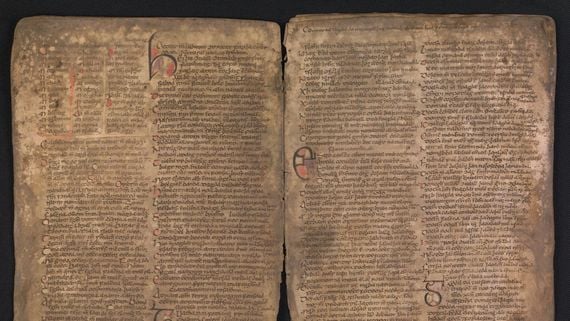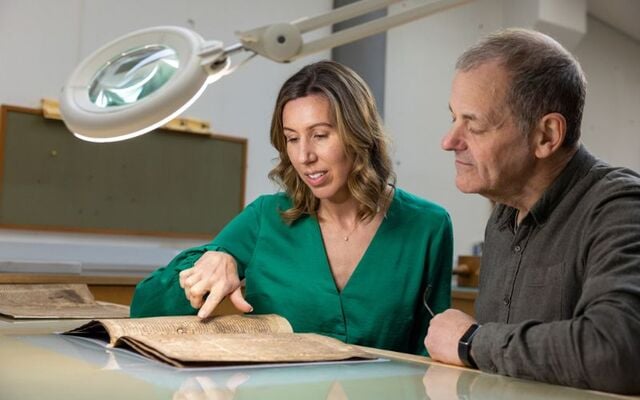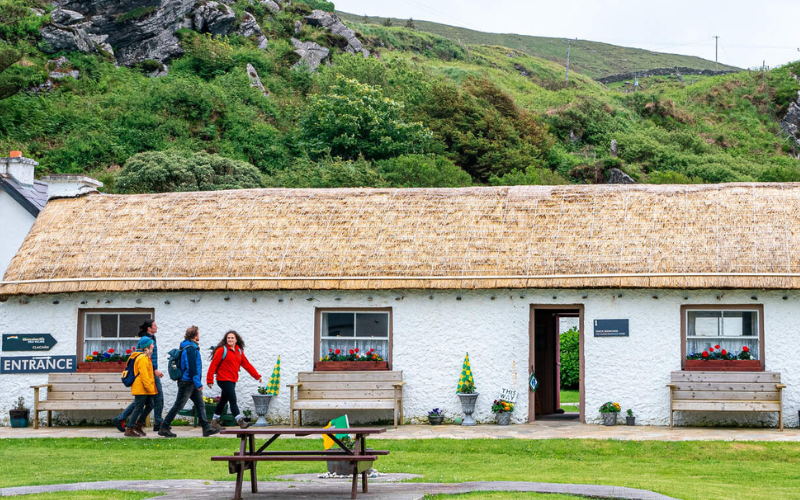Pages from one of the most important surviving medieval manuscripts written in Irish, "The Book of Leinster", as part of a new exhibition in the Library of Trinity College Dublin following a major conservation project.
Written in Old and Middle Irish in the 12th century, "The Book of Leinster", or "Leabhar Laighean", is an important source of Irish literature and history from the medieval period.
It contains historical and genealogical information, mainly on Leinster kings and heroes, mythological and historical accounts of invasions and battles, descriptive prose and verse and the history and etymology of nearly 200 place-names.
The manuscript came to Trinity in 1786 in an unbound state. For some time, the fragile condition of its 400 vellum pages prevented it from being put on public display or being consulted by researchers.
But now, thanks to painstaking conservation, the manuscript has been cleaned, stabilised, and extensive tears and losses have been repaired and the different sections reassembled.

Text from "The Book of Leinster".
Several examples of newly-conserved pages from the Book of Leinster now form the centrepiece of a new exhibition entitled “The Book of Leinster − Preserving for the Future”. Curated by the Library of Trinity College Dublin, the exhibition is being held to celebrate the completion of the conservation project.
Also on display will be other significant Irish-language medieval manuscripts, including Brehon law texts and the "Yellow Book of Lecan" ("Leabhar Buidhe Leacáin"). The exhibition forms part of the Book of Kells Experience and will run until August 12, 2025. See here to book tickets for both exhibitions.
Read more
Conservation
Chief Manuscript Conservator Dr John Gillis, the Library of Trinity College Dublin, who has led the project, explained: “Over the past two years, we have undertaken meticulous conservation of this extremely fragile and important manuscript. This involved replacing losses where necessary with new vellum, particularly the vulnerable backfolds, and reinforcing weakened areas and tears in the manuscript with a form of thin collagen.
“We were successful in our efforts to stabilise this precious manuscript and now it can be safely handled, studied and displayed. We also recorded all evidence of sewings and other marks to help better understand the manuscript’s own past.”
Caoimhe Ní Ghormáin, Curator, Manuscripts and Archives, the Library of Trinity College Dublin, added: “'The Book of Leinster' provides us with an unparalleled snapshot of the Middle Ages in Ireland. It includes a significant version of the famous Irish saga "Táin Bó Cúailnge", or the "Cattle Raid of Cooley", which is the story of the warrior Cú Chulainn.
“Most famously, it contains the Irish ‘Book of Genesis’, Lebor Gabála Érenn, which establishes Ireland, the Irish people and their language in a biblical world setting. According to the manuscript, the Irish language was created after the confusion at the Tower of Babel thus avoiding all the shortcomings of other languages. This origin story was particularly relevant in medieval times when Irish was threatened by the enormous prestige of Latin.”
Fernando Vicario, Chief Executive Officer of Bank of America Europe DAC and Country Head for Ireland, said: “We are delighted that the conversation has been a success. It was an honour to be part of preserving this precious manuscript, with a grant from Bank of America’s Art Conservation Project. The initiative was established in 2010, with the purpose of preserving cultural heritage and to date, more than 275 conservation grants have been awarded in over 40 countries. We look forward to seeing the 'Book of Leinster' and hope that many more people will now be able to enjoy this treasured work for years to come.”




Comments